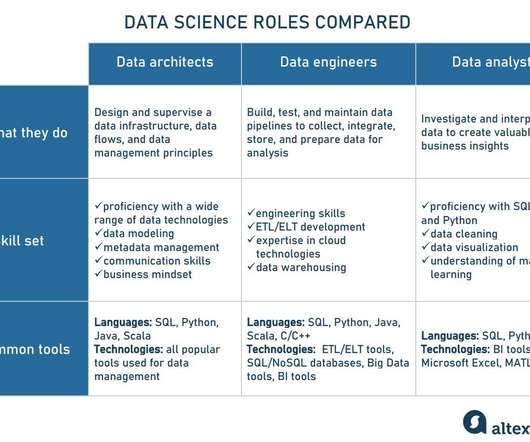Data Architect: Role Description, Skills, Certifications and When to Hire
Altexsoft
FEBRUARY 11, 2023
To get a better understanding of a data architect’s role, let’s clear up what data architecture is. Data architecture is the organization and design of how data is collected, transformed, integrated, stored, and used by a company. Sample of a high-level data architecture blueprint for Azure BI programs.















Let's personalize your content